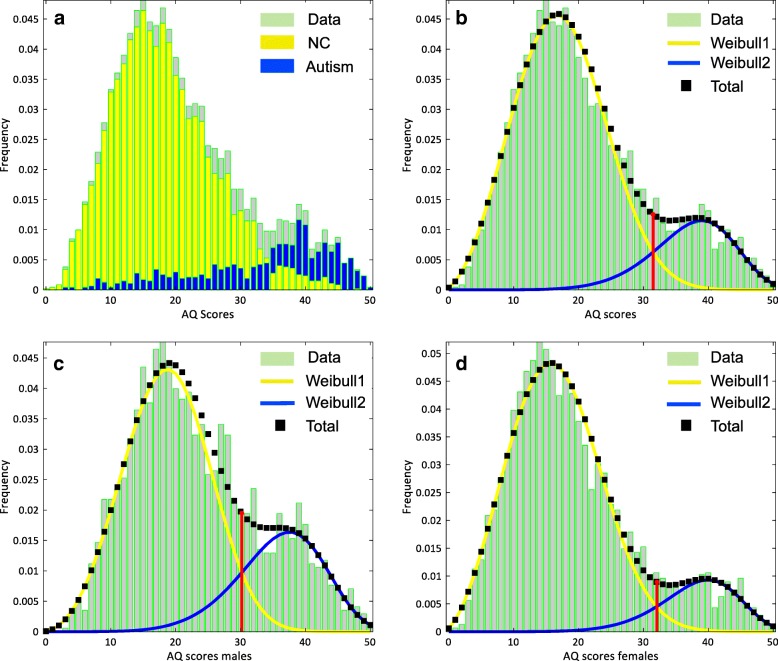Fig. 1.
a The distribution of the AQ scores broken down according to diagnosis, neurotypical controls (NC; N = 3906), and autism groups (N = 811). b The histogram of the AQ scores of the overall sample (N = 4717) and the results of dual Weibull distribution model. c The histogram of the males’ AQ scores (NC = 1344; autism = 357) and the results of the dual Weibull distribution model. d The histogram of the females’ AQ scores (N = 2562; autism = 454) and the results of the dual Weibull distribution model. b–d The black dotted line represents the total model; the yellow and blue lines represent the Weibull1 (left) and Weibull2 (right) distributions, respectively. The red line indicates the intersection (cutoff) point between the two distributions. Each of the depicted plots (b–d) is of the bootstrapped sample whose threshold is closest to the mean threshold of all bootstrapped samples. We interpret the intersection point as the threshold score between the autistic individuals and the neurotypical controls

